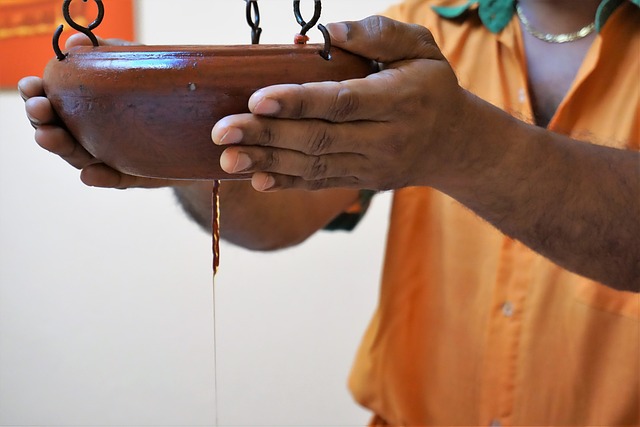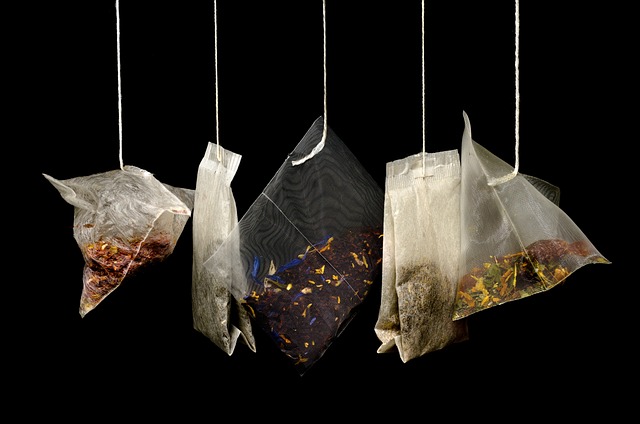
Exploring the Doshas: Understanding Pitta in Ayurveda
Ayurveda, an ancient holistic healing system originating from India, offers a profound understanding of the human body, mind, and spirit. Central to Ayurveda’s principles are the doshas – three fundamental energies that govern our physiological and psychological functions.
Vata, pitta, and kapha are the three doshas, each possessing unique qualities and playing a crucial role in maintaining our overall well-being.
Among the three doshas, Pitta holds a special place. Known as the “Fire Dosha,” Pitta governs metabolism, digestion, and transformation in the body.
In this blog, we will dive into the intriguing world of Pitta, exploring its characteristics, effects on the body, and methods to maintain a balanced Pitta for optimal health.
Furthermore, we will discuss the signs and symptoms that help identify Pitta dosha within ourselves, along with a comprehensive guide to balancing Pitta through Ayurvedic practices, lifestyle recommendations, herbs and remedies, diet, yoga, pranayama techniques, and various therapeutic treatments.
Understanding of Pitta Dosha:
Pitta is composed of the elements of fire and water, making it a force associated with heat and transformation.
Pitta governs the metabolic processes, including digestion, absorption, and energy production. It embodies qualities such as heat, intensity, sharpness, and focus.
Characteristics of Pitta:
To understand Pitta, envision the warmth and intensity of the midday sun. Pitta-dominant individuals tend to embody these qualities—they are often ambitious, assertive, and have a strong drive to achieve their goals.
They possess excellent digestion, focus, and a sharp intellect. However, an imbalance in Pitta can lead to various health issues.
Exploring the Essence of Pitta:
Fire is the elemental force that fuels Pitta dosha. Just as fire can be both nurturing and destructive, the energy of Pitta governs processes of transformation within the body, promoting digestion, assimilation, and metabolism.
It is the force that allows us to extract nourishment from our food, sustain a healthy body temperature, and ignite our intellect and passion.
The essence of fire within Pitta dosha provides us with the drive, ambition, and transformative power necessary for growth and achievement.
Physical and Mental Traits of Pitta Dominant Individuals:
Pitta-dominant individuals exhibit distinctive physical and mental traits that align with the qualities of Pitta dosha.
Physically, they tend to have a moderate, athletic build with well-defined muscles, warm and oily skin that is prone to rashes and acne, and a tendency to sweat easily. They often have sharp facial features, lustrous eyes, and a strong metabolism.
Mentally, Pitta-dominant individuals are known for their sharp intellect, strong leadership qualities, and passionate, determined nature. They are ambitious, organized, and exhibit a natural inclination towards problem-solving and decision-making.
Importance of Pitta Balance for Overall Well-being:
Maintaining a balanced Pitta dosha is crucial for overall well-being. When Pitta is in harmony, it supports healthy digestion, radiant skin, a sharp mind, and robust energy levels. It promotes vitality, enthusiasm, and a balanced emotional state.
However, an excess of Pitta can lead to imbalances and disturbances in the body and mind. It may manifest as digestive issues, skin inflammations, irritability, anger, and a critical nature.
By understanding the Pitta dosha and implementing effective strategies to balance it, we can promote optimal health, vitality, and emotional equilibrium.
Effects of Pitta Imbalances on the Body and Mind:
When the Pitta dosha becomes imbalanced, it can have profound effects on both physical and mental well-being.
Physically, excessive Pitta can result in hyperacidity, ulcers, inflammation, excessive sweating, skin conditions like eczema and psoriasis, and sensitivity to heat.
Mentally, an imbalanced Pitta can lead to irritability, anger issues, impatience, perfectionism, and a tendency to be overly critical or judgmental.
Understanding the signs of Pitta imbalance is essential to addressing it and restoring harmony to the dosha.
Signs and Symptoms to Identifying Pitta Imbalances:
Recognizing the signs and symptoms of Pitta imbalances is key to addressing them effectively.
Some common indications of excessive Pitta include persistent heartburn or acid reflux, excessive thirst, skin rashes or acne, sensitivity to heat, sharp and intense emotions, frequent irritability, and a tendency towards aggression.
These signs serve as valuable signals from the body, alerting us to restore balance and make conscious adjustments in our lifestyle and habits.
Ayurvedic Practices and Lifestyle Recommendations for Balancing Pitta Dosha:
To balance Pitta dosha, Ayurveda offers a range of practices and lifestyle recommendations.
Here are some effective tips to help bring Pitta back into harmony:
a)Cooling Foods:
Since Pitta tends to be hot, favors cooling foods such as sweet fruits, leafy greens, cucumber, coconut, and melons. Avoid or minimize spicy, oily, and fried foods, as they can aggravate Pitta.
b)Timing and Moderation:
Pitta benefits from regular mealtimes and moderate portion sizes. Avoid skipping meals or overeating. Aim for regularity in your eating habits.
c) Calming Activities:
Engage in activities that promote relaxation and cooling. Practice meditation, gentle yoga, and deep breathing exercises to calm the mind and body. Spending time in nature and near bodies of water can also be soothing for Pitta.
d) Balance Work and Play:
Pitta individuals have a tendency to overwork and become excessively competitive. Find a balance between work and leisure activities. Incorporate hobbies, creative pursuits, and downtime to maintain a healthy work-life balance.
e) Stay Hydrated:
Drink plenty of cool fluids throughout the day to maintain hydration and balance Pitta’s fiery nature. Opt for herbal teas and infusions such as peppermint, chamomile, or rose.
f) Embrace the Cool:
Create a cooling environment by using calming colors such as blues and greens in your living space. Choose lightweight and breathable fabrics for clothing.
Cooling Activities and Therapies:
Engaging in activities and therapies that have a cooling effect on the body and mind can help pacify Pitta.
This includes swimming, spending time in nature, practicing mindfulness and meditation, and receiving gentle massages with cooling oils like coconut or sandalwood.
Managing Stress and Emotions:
Pitta imbalances are often exacerbated by stress and intense emotions. Implementing stress management techniques such as yoga, deep breathing exercises, and practicing gratitude can help reduce stress levels and foster emotional balance.
Establishing a Pitta-Pacifying Routine:
Following a consistent daily routine that aligns with the natural rhythms of the day can support Pitta’s balance. This includes waking up early, practicing gentle exercise like yoga or walking, eating meals at regular times, and ensuring a restful sleep routine.
Nurturing Self-Care Practices:
Engaging in self-care rituals that promote relaxation and nourishment is essential for balancing Pitta. T
his may involve taking warm baths with essential oils, practicing self-massage with cooling oils, and dedicating time to engage in hobbies or activities that bring joy and fulfillment.
Creating a Harmonious Environment:
Surrounding ourselves with a peaceful and harmonious environment can have a significant impact on our Pitta balance.
Decluttering our living spaces, incorporating calming colors like blue and green, and diffusing soothing aromas such as lavender or chamomile can help create a serene ambiance.
Ayurvedic Herbs and Remedies for Pitta Imbalances:
Ayurveda offers a rich repertoire of herbs and remedies to address Pitta imbalances.
Some potent herbs known for their Pitta-pacifying properties include aloe vera, coriander, fennel, neem, and turmeric.
These herbs can be consumed internally or used topically to soothe inflammation, support digestion, and promote overall balance within the body.
Pitta-Pacifying Diet: Foods to Support Pitta Balance:
Adopting a Pitta-pacifying diet is instrumental in restoring balance to the Pitta dosha.
focusing on cooling and hydrating foods such as fresh fruits, leafy greens, cucumbers, coconut water, and herbal teas can help pacify Pitta.
Avoiding spicy, oily, and fried foods, as well as alcohol and caffeine, is also beneficial for reducing Pitta imbalances.
Yoga and Pranayama for Balancing Pitta Dosha:
Yoga and pranayama, the practice of breath control, are powerful tools for balancing the Pitta dosha.
Incorporating cooling and calming yoga asanas like forward bends, gentle twists, and restorative poses can help release excess heat from the body.
Pranayama techniques such as Sheetali and Nadi Shodhana (Alternate Nostril Breathing) have a cooling effect on the system, promoting balance and tranquility.
Ayurvedic Therapies and Treatments for Pitta-Related Issues:
Ayurveda offers a range of therapeutic treatments to address specific Pitta-related issues.
These may include Panchakarma therapies like Shirodhara (pouring warm oil on the forehead) or Abhyanga (Ayurvedic oil massage), which help pacify Pitta, release toxins, and promote relaxation.
Consulting with an experienced Ayurvedic practitioner can provide personalized guidance on the most appropriate therapies for individual needs.
Integrating Pitta-Balancing Practices into Daily Life:
The key to maintaining Pitta balance lies in integrating these practices into our daily lives.
Consistency is key.
Establish a routine that aligns with Pitta-pacifying principles, incorporating self-care practices, nourishing meals, and mindful activities.
Embrace a balanced approach to work and play, ensuring time for relaxation, creativity, and social connections.
Conclusion:
Pitta dosha, with its fiery and transformative nature, holds immense wisdom in Ayurveda. By understanding the essence of Pitta, recognizing its characteristics, and implementing Ayurvedic practices tailored to balance this dosha, we can cultivate optimal health, mental clarity, and emotional harmony.
By embracing the wisdom of Pitta dosha and integrating these practices into our daily lives, we can experience enhanced well-being, inner harmony, and a deeper connection to ourselves and the world around us.
(Note: The blog provides a general overview of Pitta in Ayurveda. It is essential to consult with a qualified Ayurvedic practitioner or healthcare professional for personalized guidance and advice.)
You May Also Like

Exploring the Doshas: Vata in Ayurveda
15 July 2023
Exploring the Doshas: Understanding Your Unique Body Type in Ayurveda
30 June 2023
